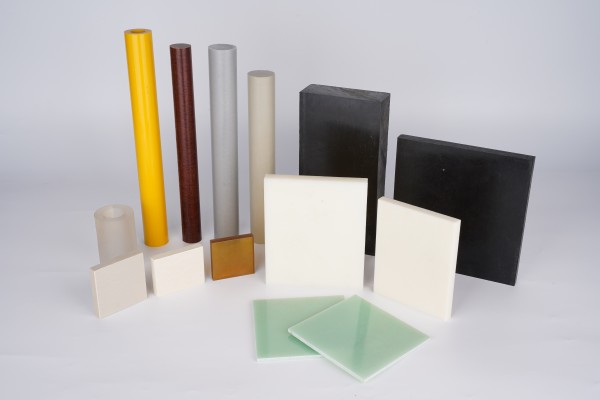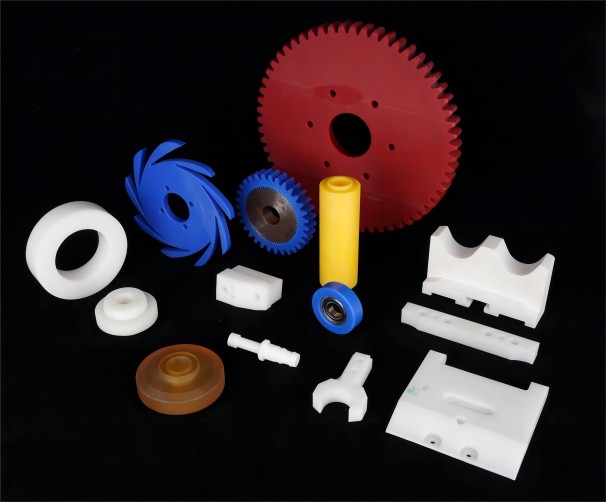
Privacy statement: Your privacy is very important to Us. Our company promises not to disclose your personal information to any external company with out your explicit permission.
Plastic is a monomer as raw material, through polymerization or polycondensation reaction polymerization of polymer compounds (macromolecules), its resistance to deformation of the ability of medium, between the fiber and rubber, by the synthetic resins and fillers, plasticizers, stabilizers, lubricants, color and other additives.
The main component of plastic is resin. Resin is a polymer compound that has not yet been mixed with various additives. The term resin was originally named after the lipids secreted by plants and animals, such as rosin and wormwood. Resin accounts for about 40% to 100% of the total weight of plastic. The basic properties of plastics are mainly determined by the nature of the resin, but additives also play an important role. Some plastics are basically composed of synthetic resins, containing no or few additives, such as plexiglass, etc.
Plastic is the art of the main components, at a certain temperature and pressure molded into a certain shape, and at room temperature can maintain the established shape of the polymer organic materials. Plastic is light and strong. General density of 0.9-2.3g/mm3, is 1/8-1/4 of steel, aluminum 1/2, friendship of the electrical insulation properties, excellent chemical stability, good friction wear resistance, good light transmission and protection performance, good shock absorption and sound damping performance. Plastics according to the performance of the surface heat is divided into thermosetting shall be scribbled and thermoplastic plastic.
Thermosetting plastic characteristics: at a certain temperature after a period of heating, pressure or add hardener after a chemical reaction and hardening, hardening of the chemical structure of the plastic changes, hard, insoluble in solvents, no longer soften after heating, such as the temperature is too high on the decomposition. Such as phenolic plastics (commonly known as bakelite), epoxy plastics (EP) and so on.
Thermoplastic characteristics: heat changes in physical state by the solid softening or melting into a viscous fluid state, but after cooling and can become hard and solid, and the process can be repeated many times. The molecular structure of the plastic itself does not change. Such as Polyethylene plastic (PE), polyvinyl chloride plastic (PVC).

| Classification of plastics | Concept | Plastics | |
| Classification by application | Engineering plastics | Generally refers to a number of plastics of industrial quality such as those used in the manufacture of machine parts or engineering structures | PA PC POM ABS PPO PBT |
| | General Purpose Plastics | Plastic materials that have only the general characteristics of plastic materials and cannot replace mechanical or engineering structural plastic materials | PVC PS Phenolic, Amino Plastic |
| Classification by physical and chemical properties | Thermoplastic | Plastics that can be repeatedly heated to soften and cooled to harden and molded | PA PC POM ABS PPO PBT PVC PS |
| | Thermosetting plastics | Plastic that is cured by heat and then softened by heat and molded again. Synthetic resins that can only be used once | Phenolic, Amino, Epoxy and Resin |
| Composition of plastics | | Resins, fillers, plasticizers, colorants, stabilizers, lubricants, etc. | |
| | | | |
| Reasons affecting the quality of plastic parts | | 1.Product design 2.Plastic mold design and production 3.Plastic material performance and quality 4.Machine adjustment parameters | |
| Parameterization | Temperature | a. Cylinder temperature b. Nozzle temperature c. Mold temperature | |
| | Stresses | a. Mold clamping pressure b. Injection pressure c. Holding pressure d. Back pressure | |
| | Speed | a. Screw speed b. Mold closing speed c. Injection speed d. Mold opening speed | |
| | Timing | a Injection time b Holding time c Cooling time | |
| Factors affecting the flowability of plastic materials | | 1. plastic varieties 2. mold structure 3. molding process 4. hygroscopicity, thermal sensitivity and volatile content 5. crystallinity 6. stress cracking and melt cracking 7. setting speed | |

The main defects of plastic products:
1. Phi peak: due to injection parameters or mold according to the reasons for the plastic fringe, mostly in the mold parting surface, thimble, slider and other activities
2. Shrinkage: when the plastic melt through a thin cross-section, the pressure loss is very large, it is difficult to maintain high pressure to fill in the thicker cross-section and the formation of pits
3. Fusion line (water line): plastic melt flow in the cavity when encountered obstacles (core and other objects) melt component to bypass the obstacles can not be a good fusion, and the formation of a clear line on the surface of the plastic
4. Streamline: raw materials in the mold cavity flow in the surface of the water as the center of the year round stripes
5. Lack of glue (underfill): due to insufficient injection pressure or poor exhaust within the mold cavity and other reasons so that the molten resin can not be molded into a corner of the cavity and the local phenomenon caused by the lack of glue
6. Top white (top convex): due to poor mold release, the product surface is subject to strong ejection force and produce white marks or bumps
7. Bubbles: A due to the raw materials in the molding before the full drying, water in the high temperature of the resin in the middle of China and the formation of bubbles B in the wall of the product is farther away from the outer surface of the cooling rate than the center part of the fast with the cooling, the center of the resin contraction side outward expansion, so that the center part of the filling of insufficient vacuum bubbles generated
8. Scorching: due to poor exhaust reasons for scorching and blackening
9. Deformation: the molded product due to some reasons for internal residual stress after demolding of the resulting deformation
10. Cracks: due to internal stress or mechanical damage caused by cracks or small cracks in the product, mainly due to residual stress, external stress or environmental stress deformation
11. Pull white: molding products off the mold due to hook material tension is greater than the ejection force of the top bar, so that some parts of the product whitening
12. Material flower: due to the raw materials in the molding for the full drying, and the formation of dots or lines of patterns
13. Color difference: the surface of the product is inconsistent with the standard sample color
November 17, 2024
November 16, 2024
August 27, 2021
August 26, 2021
PEEK ball is a special type of ball made of polyether ether ketone (PEEK), which has excellent chemical stability, abrasion resistance, and high temperature resistance.PEEK ball is widely used in...
PVDF Application Areas Different models of PVDF products are suitable for different application scenarios. According to application fields, PVDF can be divided into conventional grade products and...
Application Performance Advantages of MC nylon MC nylon is a new type of engineering plastics, due to its outstanding comprehensive performance, so that its status in engineering plastics is rapidly...
Types of nylon: 1. Nylon - 6 (PA6) Nylon -6, also known as polyamide -6, that is, polycaprolactam. Translucent or opaque opalescent resin. 2. Nylon - 66 (PA66) Nylon-66, also known as polyamide-66,...
Email to this supplier
November 17, 2024
November 16, 2024
August 27, 2021
August 26, 2021

Privacy statement: Your privacy is very important to Us. Our company promises not to disclose your personal information to any external company with out your explicit permission.

Fill in more information so that we can get in touch with you faster
Privacy statement: Your privacy is very important to Us. Our company promises not to disclose your personal information to any external company with out your explicit permission.